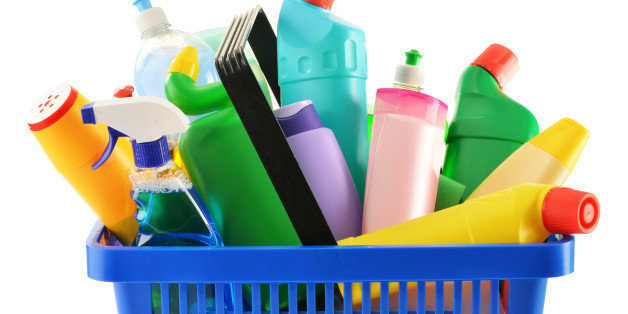The Hidden Danger In Your Kitchen
We go to great lengths to keep our families healthy, but unless you’re aware of the causes of endocrine disruption in the body, health dangers are probably lurking in your kitchen, as well as throughout your home. So our concierge family practice doctors in Jupiter want to make you aware of this hidden hazard and how to avoid it.
What are endocrine disrupters?
The body’s endocrine system comprises:
- the adrenal glands
- the pituitary gland
- the thyroid and parathyroid glands
- the pancreas
- the female ovaries
- the male testes
- the pineal gland
- the hypothalamus
- the thymus
Together, these components regulate all the body’s processes. The Endocrine Society describes endocrine-disrupting chemicals (EDCs) as “chemicals that mimic, block, or interfere with hormones in the body’s endocrine system.” Usually man-made, some types of EDCs are desirable and are intentionally administered, such as birth control pills. But other types of EDCs can have significant negative effects on the body, resulting in obesity, diabetes, abnormalities in the sex organs, altered nervous system or immune function, breast, liver, testicular, and prostate cancer, and various thyroid disorders.
According to the Environmental Protection Agency (EPA), in the last two decades, there has been a growing awareness of the possible adverse effects to humans and wildlife from exposure to chemicals that can interfere with the endocrine system. The effects can occur from conception through old age.
In addition to the disorders listed above, these effects can include:
- developmental malformations;
- interference with reproduction;
- increased cancer risk; and,
- disturbances in the immune and nervous system function.
One study from New York University Langone linked EDC exposure to development of ADHD, autism, and lowered IQ in children and adults, and estimated that EDC-related illnesses cost the United States $340 billion a year in health-related expenses. EDCs mimic naturally occurring hormones like estrogen and androgen, locking onto receptors in human cells and blocking the body’s own hormones from binding with those receptors.
They’re everywhere
At least 800 of these hormone-disrupting chemicals are ubiquitous in consumer goods, from plastics to food, pesticides, personal care products, even children’s toys. Other sources put the figure at well over 1,000.
EDCs are a catch-all term for the many types of chemicals we encounter daily. The most common include: bisphenol A (BPA) used in food containers and reusable bottles; phthalates, used in personal care products, food packaging, and disposable water bottles; pesticides used in agriculture; and brominated flame retardants, used in everything from clothing to furniture to carpeting.
EDCs can leach into soil and groundwater, eventually reaching our tables by building up in fish, animals, and humans. Household dust can contain EDCs released not only from furnishings and electronics, but from construction materials used throughout the home.
Even when you try to avoid chemicals by turning to natural substances, it can backfire. A study released by the Endocrine Society last year found a link between regular exposure to lavender essential oil or tea tree oil and abnormal breast growth in young boys. Soy, found everywhere these days in personal care products and food, acts as an endocrine disruptor, possibly reducing fertility in women, triggering early puberty, and disrupting development in fetuses and children.
What to do
To achieve a widespread reduction in the number of EDCs we’re exposed to, science and government will need to institute broad regulations to control or eliminate these hazards in our environment. In the meantime, however, there are some steps you can take to reduce your exposure to these harmful chemicals.
The National Resources Defense Council (NRDC) recommends the following ways to avoid hormone-disrupting chemicals:
- Wash your hands frequently, avoiding fragranced and antibacterial soaps.
- Dust with a damp cloth and vacuum often, using a vacuum with a HEPA filter. Use vinegar, borax, and baking soda as cleaning products, or look for cleaners that carry the “Safer Choice” label.
- Choose fragrance-free creams, cleaning products, and laundry detergents, because fragrances on a label indicate the presence of phthalates.
- Avoid plastics for food storage. Check the bottom of the containers and never use those numbered 3, 6, or 7. Use glass or stainless steel instead.
- Skip canned foods, because cans are lined with BPA to prevent corrosion. Even those marked “BPA-free” may use a similar chemical. Instead choose fresh, frozen, or dried foods, and opt for organically grown foods whenever possible.
- Filter your tap water, which may contain residue of EDCs from the groundwater.
- Don’t buy cosmetics for your children, as they can contain a number of EDCs.
If you’re concerned about the safety of any product you’re using, talk to us. We can help you sort out the confusion regarding EDCs and their danger to your health.

